Celestron CGX-L Equatorial Handleiding
Celestron
Niet gecategoriseerd
CGX-L Equatorial
Bekijk gratis de handleiding van Celestron CGX-L Equatorial (8 pagina’s), behorend tot de categorie Niet gecategoriseerd. Deze gids werd als nuttig beoordeeld door 261 mensen en kreeg gemiddeld 4.1 sterren uit 131 reviews. Heb je een vraag over Celestron CGX-L Equatorial of wil je andere gebruikers van dit product iets vragen? Stel een vraag
Pagina 1/8

POLAR AXIS FINDERSCOPE CGX & CGX-L
INSTRUCTION SHEET
Model # 94239

What’s in the Box?
• Polar finderscope and bracket
• Plastic dust covers for both ends of finderscope
• Dovetail mounting bracket (attached to base
of bracket)
• Hex head screws (x2)
• Hex keys (x4)
• Phillips screwdriver
Solar Warning
• Never look directly at the Sun with the naked eye
or with a telescope (unless you have the proper
solar filter). Permanent and irreversible eye damage
may result.
• Never use your telescope to project an image of
the Sun onto any surface. Internal heat build-up
can damage the telescope and any accessories
attached to it.
• Never use an eyepiece solar filter or a Herschel
wedge. Internal heat build-up inside the telescope
can cause these devices to crack or break, allowing
unfiltered sunlight to pass through to the eye.
• Do not leave the telescope unsupervised, either
when children are present or adults who may not
be familiar with the correct operating procedures of
your telescope.
Installing the Polar Finder
1. Loosen the two thumb knobs on the base of the
finderscope and slide the dovetail base plate off
the bottom of the finder bracket.
2. Locate the polar finder bracket mount on the
CGX or CGX-L mount. This will be a rectangular
plate located on the right-side mount’s Right
Ascension axis, just below the declination motor
housing. Remove the two Phillips head screws
and the cover plate.
3. Install the dovetail bracket into these holes using
the two hex head screws provided with packaging.
Make sure the thinner part of the dovetail bracket is
facing the north side of the mount with the broader
side facing south.
4. Slide the polar finder and bracket assembly onto the
dovetail mount and tighten the two thumb knobs to
secure it in place.
5. The position of the polar finder can be adjusted to
make the polar finder more easily accessible. To
do this, loosen the large hand knob in the middle
of the bracket, set the angle of the finder to the
desired position and tighten the knob.
Focusing the Polar Finderscope
To focus the finderscope, simply look through the
finderscope and rotate the eyepiece clockwise or
counterclockwise until the reticle is sharp.
Aligning the Polar Finderscope
Before the polar finderscope can be used, you must
align the finderscope with the mechanical polar axis
of your CGX or CGX-L mount.
1. Set the mount up during the day, but without the
counterweight bar, counterweight or telescope
tube.
2. Locate a stationary object at least ¼ mile away or
as far away as possible.
3. Loosen the Right Ascension clutch lever and
rotate the mount in R. A. until you reach one of
the hard stops.
4. Center your chosen object in the crosshairs of the
polar finderscope reticle using the latitude and
azimuth adjustment knobs on the mount. These
are the knobs which you would normally use for
polar alignment.
5. Rotate the mount 180° in R.A. and tighten the
clutch levers.
6. Look through the finderscope for your target.
If the crosshair reticle is still on the same target after
the rotation, no further adjustment is required. If
the crosshairs have moved off your target, you will
need to adjust the three knobs surrounding the
finderscope’s objective lens.
1. Without moving the equatorial mount, start by
backing off the three hex head screws recessed
in the finder bracket next to the three finder
adjustment knobs.
2. Loosen one of the finder adjustment knobs by a
half turn, then tighten one or both of the remaining
finder adjustment knobs to keep even pressure on
the finderscope. As you adjust the knobs, the aiming
point of the finderscope will shift slightly.
3. Move the crosshairs back towards the target, but
do not center the crosshairs over the target.
Instead, only move the crosshairs halfway back
toward the target.
4. Gently tighten the three recessed hex head
screws until they are snug. Do not overtighten.
5. Use the latitude and azimuth adjustment knobs on
the equatorial mount to re-center the crosshairs
on your distant target.
6. Unlock the R.A. clutch knob on the mount and
rotate the mount 180° back the other direction.
7. Look through the finderscope for your target.
8. The alignment should be close. Repeat this procedure
as necessary until the crosshair stays on target
after rotating the mount 180°.
While a daytime alignment is easier, it is possible to
do this alignment at night. Simply use Polaris as your
target to center the crosshairs of the finderscope.
NOTE: You should only need to do this alignment
procedure once, unless the finderscope is
bumped or dropped. Your polar finderscope is
mounted to the CGX or CGX-L mount using a
dovetail bracket that will allow you to attach and
remove the finderscope for storage or travel. It
should maintain its alignment with repeated use.
If you adjust the angle of the finder bracket arm
after aligning the finder, you may want to check
the alignment once again before use to verify
the finder is still aligned to the polar axis of
the mount.
Alignment Knobs
Objective Lens
Eyepiece &
Focuser
1

Using the Polar Finder
1. Setup your mount outside at night, as you
normally would, for observing. Adjust the polar
axis of your CGX or CGX-L mount so the latitude
scale on the side of the mount is close to the latitude
of your observing site. Orient the mount so your
polar axis is roughly facing north. Use a compass
if necessary.
2. Remove the caps from the eyepiece and objective
lenses of the finderscope and look through the
polar finderscope.
3. The polar alignment reticle contains representations
of the constellations Cassiopeia, Octans, the Big
Dipper asterism, the North Celestial Pole (NCP) and
Polaris. While the constellations and the Big Dipper
are not in scale, they do show their correct relative
positions to the Celestial Pole.
4. For Northern Hemisphere observers, rotate the
finderscope within its bracket until Cassiopeia
and the Big Dipper match their current orientation
in the sky when seen with the unaided eye. Use
the latitude and azimuth polar adjustment knobs
on your mount until Polaris in the small circle labeled
“Polaris” in the reticle.
For Southern Hemisphere observers, rotate the reticle
until the stars of Octans match their orientation of the
reticle. Use the latitude and azimuth polar adjustment
knobs on your mount until the stars of Octans fit inside
the small circle labeled “Octans” in the reticle.
5. Make sure you tighten all of the knobs on the
mount to firmly lock the polar axis in position.
You are now polar aligned and ready to use your
mount for observing or imaging.
NOTE: The use of this polar finderscope requires
that you have a clear view of Polaris. If you have
trees or buildings blocking your view to the North,
you will need to relocate your mount or use a different
method of polar alignment.
While it is possible to do the alignment procedure
without telescope tube attached to the equatorial head,
it is recommended that the tube and counterweights
be attached before you begin polar alignment. Any
accidental bumping of the mount when installing the
tube and counterweights, or any settling of the tripod
into the ground as weight is added may throw off
your alignment.
Thank you for purchasing a quality Celestron
product. Please register your product by
visiting our website and registering online:
Celestron.com/register
Chercheur sur axe polaire CGX & CGX-L
Feuille d’instructions (Français)
Contenu de la boîte
• Chercheur polaire et support
• Caches anti-poussière pour chaque extrémité
du chercheur
• Monture à queue d’aronde (attachée à la base
du support)
• Vis à tête hexagonale (x2)
• Clefs Allen (x4)
• Tournevis cruciforme
Avertissement au sujet des rayons du soleil
• Ne jamais regarder directement vers le Soleil à
l’œil nu ou avec un télescope (à moins d’utiliser un
filtre adapté). Cela pourrait entraîner des lésions
oculaires permanentes et irréversibles.
• Ne jamais utiliser votre télescope pour projeter
une image du Soleil sur n’importe quelle surface.
L’augmentation de la température dans le
télescope peut endommager ce dernier et les
accessoires qui y sont attachés.
• Ne jamais utiliser un filtre solaire d’oculaire ou une
cale de Herschel. La concentration de chaleur au
sein du télescope peut entraîner des dommages à
ces accessoires, laissant la lumière du Soleil non
filtrée arriver directement à vos yeux.
• Ne laissez pas le télescope sans surveillance en
présence d’enfants ou d’adultes qui ne sont pas
familiarisés avec les procédures pour le faire
fonctionner correctement.
Installation du chercheur polaire
1. Desserrez les deux vis à main situées à la base du
chercheur et faites glisser la plaque de support de
la queue d’aronde hors de la section inférieure du
support du chercheur.
2. Localisez la monture du chercheur sur la monture
CGX ou CGX-L. Elle prend la forme d’une plaque
rectangulaire présente sur le côté droit de l’axe
d’Ascension droite de la monture, juste en-dessous
du boîtier du moteur de déclinaison. Retirez les
deux vis cruciformes et la plaque.
3. Installez la monture à queue d’aronde dans ces
trous en utilisant les deux vis hexagonales incluses
dans la boîte. Assurez-vous que la partie moins
épaisse de la monture à queue d’aronde soit
orientée vers le côté nord de la monture, le côté
plus épais oriénté vers le sud.
4. Faites glisser le chercheur polaire et son support
sur la monture à queue d’aronde et serrez les
deux vis à main pour les sécuriser.
5. La position du chercheur polaire peut être ajustée
pour faciliter son accès. Pour faire cela, desserrez
la grande molette située au milieu du support, réglez
l’orientation du chercheur comme désiré, puis
resserrez la molette.
Effectuer la mise au point du chercheur polaire
Pour mettre le chercheur au point, regardez simplement
dans le chercheur et faites pivoter l’oculaire dans le
sens horaire ou anti-horaire jusqu’à ce que le viseur
soit net.
B
i
g
D
i
p
p
e
r
Octans
Polaris
C
a
s
s
i
o
p
e
i
a
© 2017 Celestron • All rights reserved
www.celestron.com
2835 Columbia Street • Torrance, CA 90503
Telephone: 800.421.9649
Model # 94239
Molettes d’alignement
Lentille de l’objectif
Oculaire et
foyer
2
Product specificaties
| Merk: | Celestron |
| Categorie: | Niet gecategoriseerd |
| Model: | CGX-L Equatorial |
Heb je hulp nodig?
Als je hulp nodig hebt met Celestron CGX-L Equatorial stel dan hieronder een vraag en andere gebruikers zullen je antwoorden
Handleiding Niet gecategoriseerd Celestron

30 Juli 2024

23 Juni 2024

5 Juli 2023

2 Juli 2023

17 Juni 2023

15 Juni 2023

25 Mei 2023

23 Mei 2023

30 April 2023
Handleiding Niet gecategoriseerd
- Brother
- Mercyu
- DoorBird
- Nvidia
- Choice
- Platypus
- ChargeHub
- Nesco
- LD Systems
- Radiant
- Elmo
- Baby Brezza
- Becken
- Creative
- Ufesa
Nieuwste handleidingen voor Niet gecategoriseerd
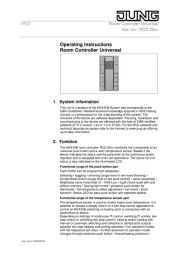
2 Augustus 2025
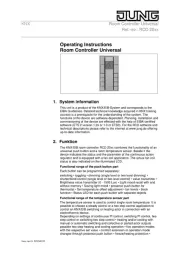
2 Augustus 2025
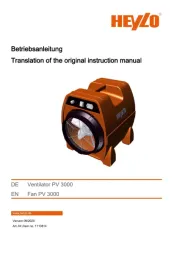
2 Augustus 2025
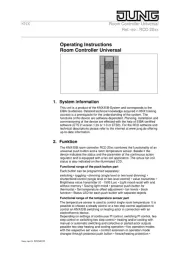
2 Augustus 2025
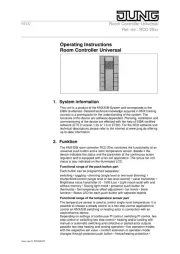
2 Augustus 2025
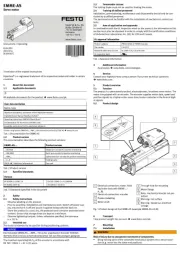
2 Augustus 2025
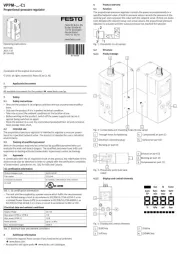
2 Augustus 2025
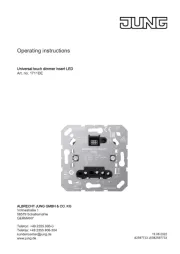
2 Augustus 2025
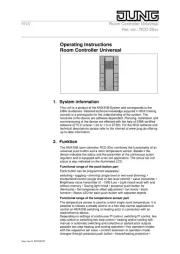
2 Augustus 2025
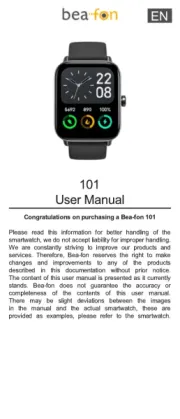
1 Augustus 2025
